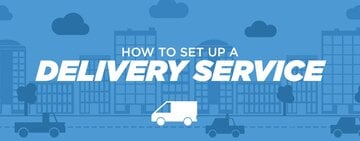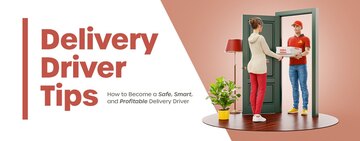What Is a Drive In Diner?
Last updated on Feb 1, 2022Jason KurtzFor many people, drive-ins are synonymous with American culture. They've been featured in movies, inspired songs, and even been replicated at tourist attractions or theme parks. However, despite their popularity, many people have never actually been to a drive-in. Below, we've created a guide that walks you through how to start your own drive-in service, the benefits they offer compared to curbside delivery or takeout, and the history of drive-ins.
What Is a Drive In?
A drive-in diner, sometimes referred to as a carhop service, is a foodservice establishment that brings food directly to one's car. Guests simply have to park in a designated area, place an order, and wait for a server to arrive with their food. While most traditional drive-ins were small businesses or regional chains, chances are you’ve heard of popular drive-in brands like Sonic, Checkers, and A&W.
Though viewed by many as a relic of the past, the modern concept of drive-in has evolved into something entirely new. Modern products and technologies have enabled drive-ins to become more efficient than ever. Furthermore, with planning and reorganization, any restaurant or diner can convert itself into a drive-in. Whether you're looking to change your business model or have to adapt to serve new customers, adopting a drive-in service can be successful if done right.
How to Offer Drive In Services
If you currently own a restaurant and are looking for a new way to connect with customers and drive sales, establishing a drive-in service might be right for you. However, there are several things you'll need to do to make sure your new service runs smoothly. Below, we've created a list of steps for you to follow as you start planning your new drive-in service!
1. Create a Designated Drive In Dining Area

If you’re considering starting a drive-in service, it’s important to set up a designated area for guests to park. Not only will this keep your customers informed on where to go, but it helps you and your staff to stay on top of who is ready to be served. Follow the steps below to organize your parking lot in a way that's drive-in-friendly.
- Number specific parking spots so that servers know where each order is headed.
- Buy or construct a sign that marks where your designated drive-in space is.
- Make sure the area is separate from your staff parking or walk-in parking areas.
- Provide enough space so that each car has privacy from the car next to it.
- Consider having an employee direct drive-in guests to their spots.
2. Invest in Drive In Supplies
If you’re offering drive-in services for the first time, chances are you'll need to stock up on the necessary equipment and supplies to run it properly. Dining in a car is a much different experience compared to dining in a restaurant, meaning traditional restaurant supplies won’t do. Some necessary products to buy for your drive-in include:
- Attachable Window Serving Trays
- Parking Lot Signs
- To-Go Containers
- Takeout Supplies
- Menu Signs
- Additional Parking Lot Lighting
3. Create a Drive In Menu

Some meals that you typically sell might be too large or messy to eat in a car, so consider optimizing your menu to better suit your new drive-in! Sticking to smaller dishes or handheld foods can benefit both you and your customer. Consider featuring the following foods to create a convenient and car-friendly drive-in menu.
- Burgers
- Hot Dogs
- Chicken Tenders
- Wraps
- French Fries
- Milkshakes
- Ice Cream
4. Establish a Drive In Ordering System
Since guests won’t be greeted by a host or asked to order inside the restaurant, you’ll want to make sure to establish an effective ordering system. Doing so is essential to make sure every customer gets their food on time and has access to excellent customer service. Some drive-ins have an individual menu for each designated parking space, while others might send a carhop to the car window and pass a menu through. It's also common for some drive-in services to use an intercom system for placing orders. Additionally, you can consider having guests order online, by phone, or through your app once they’ve parked.
5. Hire and Train Staff
A carhop is an employee who serves customers in their cars at a drive-in restaurant. Because of the differences between traditional diner settings and drive-ins, it's essential to point them out and make changes to your protocols for employees that will be working on the drive-in side of your business. Additionally, it might be beneficial to hire more staff, as serving guests indoors and in your parking lot might put a strain on your existing employees. Consider adopting these topics into your current training protocol if you plan on starting a drive-in service.
- Establish guidelines: While some of your staff may have previous foodservice experience, they may not be acquainted with the unique drive-in diner enviornment. Make an effort to establish clear guidelines can reduce confusion and aid your staff.
- Emphasize safety: Between cars, servers, and other traffic, chances are your parking lot will be busy. Be sure to emphasize safety in the workplace to reduce accidents and protect your guest and employees.
- Introduce serving trays: Many of your employees may be unfamiliar with attachable serving trays. Teach them how to properly attach and secure the trays to ensure your guets' food doesn't fall.
- Offer skating lessons (optional): A key characteristic of many retro drive-ins was that servers would arrive on roller skates. While this isn't necessary to success, some drive-in owners may choose to embrace a retro aesthetic. If your staff is comfortable with it, invest in roller staking lessons and take safety precautions to prevent injury.
Benefits of a Drive In Service

Drive-ins offer several benefits compared to curbside delivery, takeout, or drive thru services. The different layout and proximity to your business allow you to serve guests in ways you otherwise couldn't. Some of the benefits associated with drive-ins include:
- Additional customer service opportunities: Establishing a drive-in service gives your staff additional opportunities to assist your guests and improve their experience.
- Increased profits: Customers who dine at a drive-in might consider ordering more food than they would if they were just grabbing a meal and heading home, giving you a chance to increase profits.
- Expanded menus: You’ll be able to serve more items from your menu. Some meals like ice cream might melt by the time it gets to your customer’s house, and dining on location eliminates that risk.
- Avoid capacity limits: If your restaurant dining room is closed or must operate with limited occupancy due to local restrictions, a drive-in allows you to serve more customers while remaining socially distant. Additionally, increased customers allows you to employ servers who would otherwise be out of work if you remained operating at limited capacity.
History of Drive In Diners
The concept of a drive-in was first popularized in 1921 by a chain of restaurants in Texas called The Pig Stand. By the 1950s, they’d become popular across the nation and were a staple of American culture. They were a common hangout spot where teens, young adults, and families could go to spend time with one another and socialize.
As time went on, highways and other infrastructure advancements made drive-ins less of a focal point in the community. They were replaced with gas stations, hotels, and fast food chains that offered faster and convenient service. Save for a few chain restaurants and tourist attractions, drive-ins were virtually extinct up until 2020. As the COVID-19 pandemic forces restaurants to follow social distancing guidelines, drive-ins have begun to make a comeback.
While some people have transitioned to curbside take out and no-contact delivery, others have begun to experiment with drive-in service once again. Many business owners have found their new drive-ins to be successful, leading to some considering making them a permanent part of their restaurant going forward. Follow the guidelines listed above if you plan on starting your own drive-in service.



